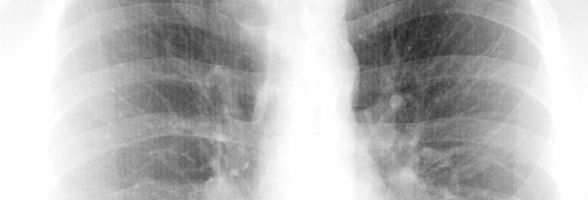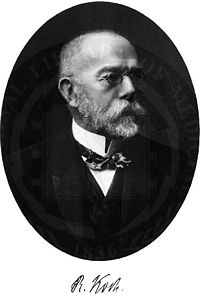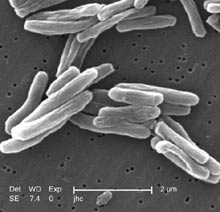
Overview
History
Tuberculosis has affected humans since the Neolithic times.
In ancient
 Robert Koch identified the bacterium in 1882 and reported tuberculosis as an infectious disease. In the 19th century, treatments applied to infected patients consisted of injecting air into their chest cavity and decreasing their lung size by surgery called thoracoplasty. These procedures were mostly unsuccessful. By the 20th century there was still no effective treatment available. In 1946, Streptomycin was finally discovered as the first antibiotic to successfully fight tuberculosis. Another anti-TB drug is called isoniazid also became available in 1952.
Robert Koch identified the bacterium in 1882 and reported tuberculosis as an infectious disease. In the 19th century, treatments applied to infected patients consisted of injecting air into their chest cavity and decreasing their lung size by surgery called thoracoplasty. These procedures were mostly unsuccessful. By the 20th century there was still no effective treatment available. In 1946, Streptomycin was finally discovered as the first antibiotic to successfully fight tuberculosis. Another anti-TB drug is called isoniazid also became available in 1952.
Types of TB bacteria
There are four types of bacterium that cause tuberculosis:
- Mycobacterium bovis
- Mycobacterium africanum
- Mycobacterium mircroti
- Mycobacterium tuberculosis
Myobacterium tuberculosis is the main type that causes the disease. It has been identified as a rod-shaped bacterium. It's acidic cell wall makes it hydrophobic (cannot dissolve in water).
Tuberculosis Infection
 TB mainly affects the lungs. About two to eight weeks after the lungs have been infected with M. tuberculosis, the immune system starts to act. Macrophages which are a specialized type of white blood cells begin to surround and "wall off" the TB bacteria in the lungs. The bacteria may remain within these walls for years if the marcrophages are efficient, but it will still be alive in a dormant state. In this case, the patient has a TB infection (Primary Pulmonary disease). The patient would not be able to spread the disease and may only have minor symptoms. However they will test positive on the TB skin test due to the presence of the bacteria.
TB mainly affects the lungs. About two to eight weeks after the lungs have been infected with M. tuberculosis, the immune system starts to act. Macrophages which are a specialized type of white blood cells begin to surround and "wall off" the TB bacteria in the lungs. The bacteria may remain within these walls for years if the marcrophages are efficient, but it will still be alive in a dormant state. In this case, the patient has a TB infection (Primary Pulmonary disease). The patient would not be able to spread the disease and may only have minor symptoms. However they will test positive on the TB skin test due to the presence of the bacteria.
Active Tuberculosis
In some cases the immune system fails to act on M.Tuberculosis. When this occurs in the lungs this TB bacteria begin to use macrophages for their own survival which leads to the formation of granulomas. These are white blood cells that are tightly packed. The bacteria then start to multiply inside the granulomas forming tumour-like nodules.
These nodules have fluid in their centre and the fluid can eventually break through the granulomatous wall surrounding them. This could lead to a spillage of bacteria into the lung airway which allows large air spaces (cavities) to form. The bacteria then multiply in great numbers in these cavities due to the high concentration of oxygen. The TB bacteria is now in its active state and it’s most deadly (Pulmonary Tuberculosis). It may then spread from the air spaces to the rest of the lungs where they could block drainage of fluid. This leads to the accumulation of fluid in the lungs which causes suffocation and death.
The active Tuberculosis bacteria can also target any part of the body especially those that have high oxygen pressures such as the kidneys, meninges, bone marrow and the lymphatic system. This could lead to secondary diseases such as Meningitis.
Robert Koch image courtesy of en.wikipedia.org/wiki/File:RobertKoch.jpg. This image is in the public domain and copyright free.
M.Tuberculosis image courtesy of en.wikipedia.org/wiki/File:Mycobacterium_tuberculosis.jpg. As work of the U.S federal government, the image is in the public domain and copyright free.